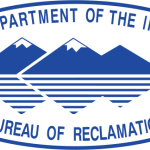- Sektör: Government
- Number of terms: 15655
- Number of blossaries: 0
- Company Profile:
A U.S. Department of the Interior agency that oversees water resource management incuding the oversight and operation of numerous diversion, delivery, and storage projects the agency has built throughout the western United States for irrigation, water supply, and attendant hydroelectric power ...
The sum of the probability of dam failure multiplied by the annual probability of the loading and the estimated number of lives that would be lost (consequences) for each dam failure scenario under a particular loading category (i.e. (probability of failure)(probability of load)(potential loss of life)).
Industry:Engineering
Document stating the U.S. Fish and Wildlife Service (FWS) and the National Marine Fisheries Service (NMFS) opinion as to whether a Federal action is likely to jeopardize the continued existence of a threatened or endangered species or result in the destruction or adverse modification of critical habitat.
Industry:Engineering
The upper, or top, layer of a lake or reservoir with essentially uniform warmer temperatures. The upper layer of water in a thermally stratified lake or reservoir. This layer consists of the warmest water and has a fairly constant temperature. The layer is readily mixed by wind action. See stratification.
Industry:Engineering
The Western Area Power Administration markets and delivers reliable, cost-based hydroelectric power and related services within a 15-state region of the central and western U.S. WAPA's transmission system carries electricity from 55 hydropower plants, including those operated by the Bureau of Reclamation.
Industry:Engineering
The distance measured along the center line or most direct practical route between the center of the mass of excavation and the center of mass of the fill as finally placed. It is the distance material is moved. Average haul is the average distance a grading material is moved from cut to fill. See overhaul.
Industry:Engineering
The system for obtaining the attention of the public and providing appropriate emergency information. Sirens are the most commonly used public alert devices but frequently are suppplemented by tone alert radios, visual warning devices for the hearing impaired, and telephone-based alert/notification systems.
Industry:Engineering
The boundaries (determined by laboratory tests) of moisture content in a soil between the liquid state and plastic state (known as liquid limit), between the plastic state and the semisolid state (known as the plastic limit), and between the semisolid state and the solid state (known as the shrinkage limit).
Industry:Engineering
The boundaries (determined by laboratory tests) of moisture content in a soil between the liquid state and plastic state (known as liquid limit), between the plastic state and the semisolid state (known as the plastic limit), and between the semisolid state and the solid state (known as the shrinkage limit).
Industry:Engineering
Procedures used to allocate joint project costs to specific purposes in a multipurpose project. The allocations for some projects change from year to year because of changes in project composition. The process of distributing project costs among authorized project purposes to determine repayment requirements.
Industry:Engineering
To lower an existing grade or surface level, or an area where this has been done. Gross cut is the total amount of excavation in a road or a road section, without regard to fill requirements. Net cut is the amount of excavated material to be removed from a road section, after completing fills in that section.
Industry:Engineering
